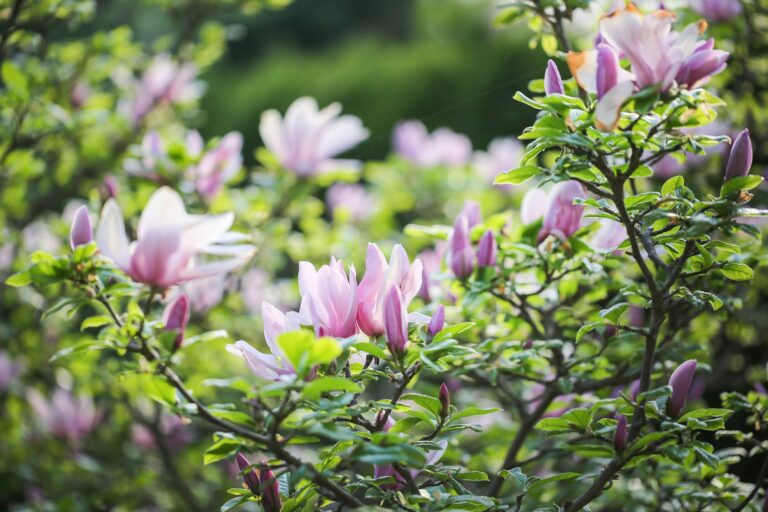Comprehensive Guide to Identifying and Managing Magnolia Tree Diseases

Magnolia trees are a stunning addition to any landscape, with their lush foliage and showy blooms. However, like all plants, magnolias are susceptible to diseases caused by various pathogens. In this in-depth guide, we will explore 13 common magnolia tree diseases, and provide valuable insights on how to identify and manage them effectively to ensure the health and beauty of your beloved magnolia trees.
Understanding Magnolia Tree Diseases
Before we dive into specific diseases, it’s crucial to recognize that maintaining proper and sanitary cultivation practices is key to keeping your plants disease-free. A healthy plant is more resilient against pathogens, making it easier to combat diseases effectively. By providing your magnolia trees with optimal growing conditions, you can significantly reduce the risk of infections. Additionally, maintaining a clean garden environment by removing fallen leaves and detritus can help prevent the spread of diseases among your plants.
Common Magnolia Tree Diseases
1. Algal Leaf Spot
Caused by the parasitic alga Cephaleuros virescens, algal leaf spot affects magnolia trees by forming grayish-green, brown, or orangish spots on the leaves and stems. To manage this disease:
– Remove infected leaves and twigs promptly.
– Prune and space your magnolia trees to improve airflow within the canopy.
– Consider using a copper fungicide for severe infections.
2. Anthracnose
Anthracnose, caused by Colletotrichum fungi, results in angular spots on magnolia leaves with a burned appearance. Managing anthracnose involves:
– Pruning infected foliage and branches.
– Using fungicides containing mancozeb for extensive infections.
3. Bacterial Blight
Bacterial blight, caused by Pseudomonas bacteria, leads to small, dark spots on magnolia leaves surrounded by yellow halos. To control bacterial blight:
– Prune infected shoots and sterilize tools.
– Consider using copper-based bactericides for severe cases.
4. Bacterial Leaf Scorch
Symptomatic of Xylella fastidiosa bacteria invading magnolia xylem, bacterial leaf scorch causes leaves to turn brown and wilt. Management strategies include:
– Removing infected branches and trees if necessary.
– Consulting with professionals for advanced treatment options.
5. Bacterial Leaf Spot
Similar to bacterial blight, bacterial leaf spots are dark spots on magnolia leaves caused by Xanthomonas bacteria. Treatment involves:
– Pruning affected tissue and using copper-based bactericides.
6. Cankers
Cankers are necrotic lesions on branches and trunks caused by various pathogens. To address cankers on magnolia trees:
– Prune affected branches several inches below the lesions.
– Consult with experts for trunk or root canker removal.
7. Crown Gall
Caused by Agrobacterium tumefaciens, crown galls are swollen masses of tissue on magnolia trunks and stems. Management includes:
– Removing galls during the dry season.
– Seeking help for large gall removal or tree replacement.
8. Pestalotiopsis Leaf Spot
Caused by fungal species in the Pestalotiopsis genus, Pestalotiopsis leaf spot results in circular necrotic spots on magnolia leaves. To control this disease:
– Prune infected leaves and enhance water management practices.
9. Phytophthora Root Rot
Affecting many trees and shrubs, Phytophthora root rot can lead to wilting and discoloration of magnolia foliage. Management strategies include:
– Planting in well-draining soil and avoiding overwatering.
– Removing infected trees and replacing them with resistant species.
10. Phyllosticta Leaf Spot
Caused by Phyllosticta magnoliae, this fungal disease forms black-bordered lesions on magnolia foliage. To manage Phyllosticta leaf spot:
– Remove spotted leaves and promote proper airflow in the canopy.
– Consider early-season fungicide applications for severe infections.
11. Powdery Mildew
Powdery mildew, caused by fungal species, results in white patches on magnolia foliage. Control measures may include:
– Pruning to improve airflow and reduce humidity.
– Using fungicides such as neem oil for persistent infections.
12. Verticillium Wilt
Verticillium wilt, caused by Verticillium fungi, leads to browning of sapwood and leaf dieback in magnolia trees. Management involves:
– Avoiding wounds and maintaining proper watering practices.
– Removing infected trees and replacing them with resistant species.
13. Wetwood
Also known as slime flux, wetwood is characterized by dark liquid oozing from tree wounds. While little can be done to treat wetwood directly, you can mitigate symptoms by:
– Pruning infected branches and promoting overall tree health.
– Avoiding wounds and preventing excessive stress on the tree.
Taking Action Against Magnolia Tree Diseases
By familiarizing yourself with these common magnolia tree diseases and implementing proactive management strategies, you can protect your magnolia trees from the harmful effects of pathogens. Remember to prioritize proper cultivation practices, such as sanitation and adequate airflow, to maintain plant health and resilience against diseases. If you encounter severe infections, don’t hesitate to seek professional assistance for expert guidance and treatment options.
Don’t let magnolia diseases overshadow the beauty of your beloved trees. With the right knowledge and proactive approach, you can ensure the longevity and vitality of your magnolia landscape. Embrace the challenge of disease management to preserve the stunning allure of these magnificent trees for years to come.
For more informative content on magnolia care and disease prevention, explore our additional guides on magnolia varieties, propagation techniques, and cultivation tips. Keep learning and growing to become a confident and knowledgeable magnolia enthusiast!
Remember, a healthy magnolia tree is a happy magnolia tree. Let’s work together to keep your trees thriving and disease-free. Share your questions, insights, and experiences in the comments below. Your participation and engagement enrich our community of plant enthusiasts and help us learn and grow together.
Esteemed readers, we hope you found this comprehensive guide insightful and valuable for your magnolia tree care journey. Your dedication to maintaining healthy and vibrant magnolia trees is commendable, and we are here to support you every step of the way. Thank you for entrusting us with your plant care needs and embracing the joy of gardening. Let’s continue to nurture our green companions and celebrate the beauty of nature in our lives.





